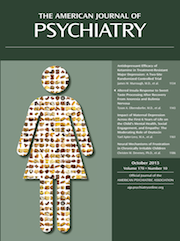The Psychological Significance of the Blush
The blush, a phenomenon unique to humans among all animal species, was famously studied by Charles Darwin in 1872. Despite this early and illustrious attention, the blush has not been comprehensively explored in a single volume until now, with this new collection of research and commentary by W. Ray Crozier and Peter de Jong, published by Cambridge University Press.
Although the title refers to the psychological significance of the blush, the book reaches far beyond psychology in breadth and depth, and appropriately so—the blush is a complex phenomenon and poses an evolutionary, physiological, as well as psychological puzzle. What is the evolutionary purpose of the blush—what competitive advantage does blushing provide? How is the specific dilation of facial blood vessels achieved? What are the psychic causes and effects of the phenomenon, on both the blusher and the beholders of the blush?
Many of the chapters, in this volume of 16, illustrate how these three questions are inextricably linked. The chapters are divided into four sections (“The Nature of the Blush,” “Theoretical Perspectives on the Blush,” “The Blush in Social Interaction,” and “Blushing Problems: Processes and Interventions”). The first addresses how the blush arises in the vasculature of the face and how this can be measured using, for example, photoplethysmography, infrared thermography, and self- and observer questionnaires. The second addresses the affective causation of the blush, exploring it from neurodevelopmental, neuroscientific, and evolutionary perspectives. The third provides analyses of how various social situations (embarrassment, shame, shyness, or public praise) can induce blushing and how the blush serves as a signal to the beholder. The last section of the book uses specific disorders of blushing to further examine the causes of both normal and excessive blushing, as well as the treatment of it, both of which lend further insights into the three central concerns: the evolutionary, the physiological, and the psychological causes and effects of the blush.
Why blush? Several theories, based on research from diverse settings, are put forth in this volume. One, from the evolutionary perspective, is that blushing conveys the blusher’s awareness that he or she has done something embarrassing, with the goal of displaying acknowledgment of wrongdoing and demonstrating apology in order to avoid aggression or ostracism from onlookers in his or her social group (chapter 4). Being able to maintain group acceptance following transgression could be evolutionarily advantageous. Another theory, from the physiological perspective, postulates that increased sympathetic activity from the CNS (flight or flight-like signal) dilates facial arterial vessels to allow greater flow to the face and dilates venous vessels to allow blood to pool near the skin surface before undergoing venous return (chapters 1 and 2). From the psychological perspective, various theories are rendered about the feelings that elicit a blush, most obviously, embarrassment and shame. However, less obvious psychosocial stimuli are also examined. For example, dramaturgical study and interviewing of actors (chapter 10) suggests that a blush occurs when a shy person’s shyness is exposed, a problem that can be readily evident in actors. Also, simply being the center of attention or under scrutiny, even if not negative (i.e., when “Happy Birthday” is sung to an individual by a group of friends), can elicit a blush (chapter 9).
Some books that consist of chapters written by many different authors can seem like a gathering of unrelated or overlapping independent essays. But this book forms a cohesive and comprehensive progression. The foreword, by Peter de Waal, and the opening chapter by the editors, Crozier and de Jong, set the stage and clearly define the central questions that will be addressed. Then, in the final chapter, the two editors summarize findings, citing specific chapters in turn and identifying conceptual links between them. This book is impressively free of redundancy, save for the fact that several chapters open with Darwin’s quote, “Blushing is the most peculiar of all human expressions,” which is endearing rather than tiresome. The quote seems to serve as a “call to arms” for these blush scholars and researchers. The prose style is consistent from one chapter to the next, despite the fact that the authors hail from several different countries, which is a tribute to the editorial skill of Crozier and de Jong.
Weaknesses were difficult to identify. The fact that much of the data presented were from the 1990s and 2000s, as opposed to more recent data, is less a weakness of the book than a shortfall of resources being allocated to blush research. However, data as recent as 2012 were reported in some chapters.
This comprehensive and impressively constructed presentation of the state of blush research is a fascinating and useful volume for evolutionary scientists, psychologists, psychiatrists, and neuroscientists. However, because of the quality of the prose, it is also appropriate for lay readers curious about this uniquely human phenomenon.



